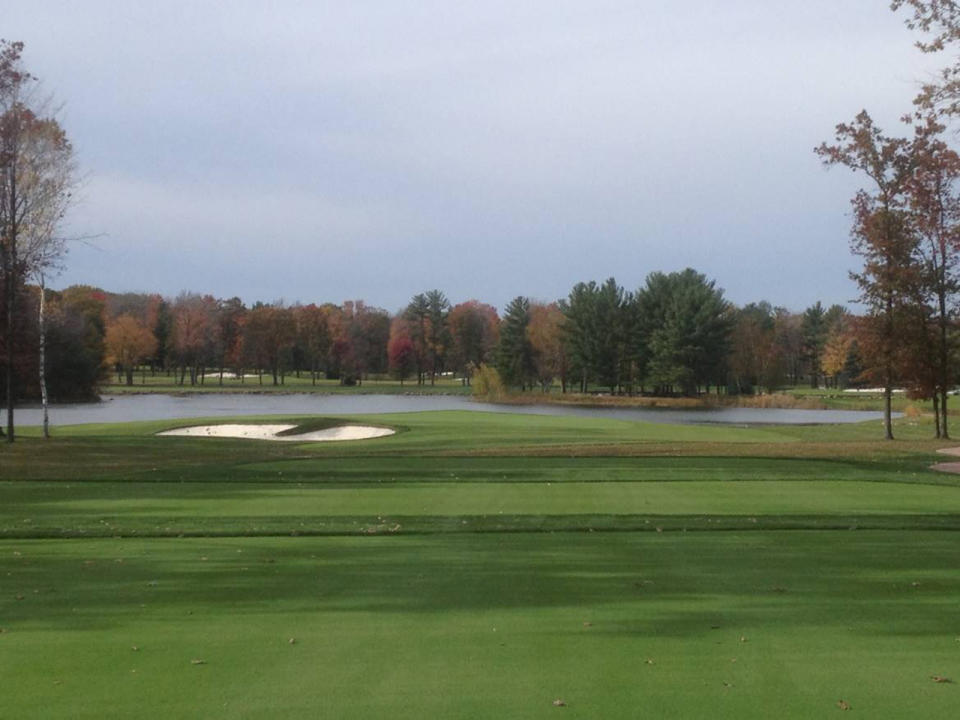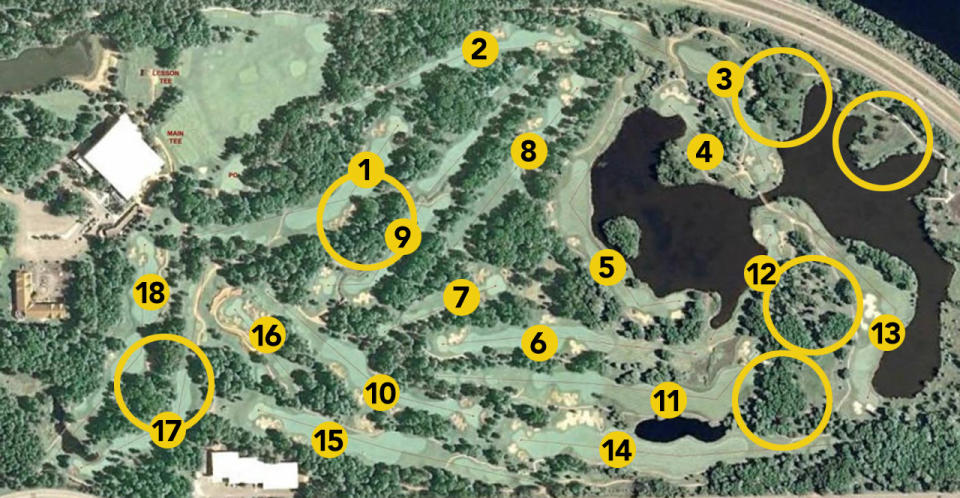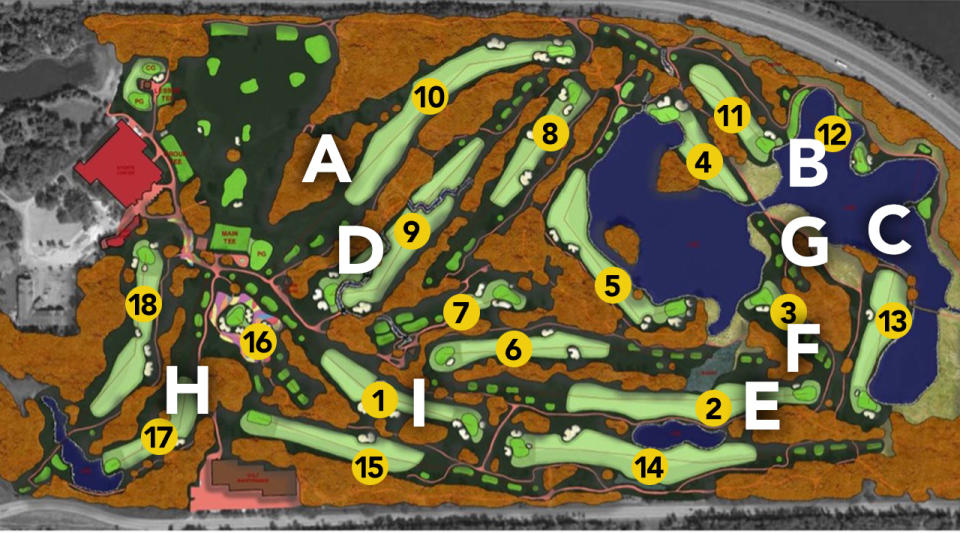SentryWorld renovation a decade ago teed up this week’s U.S. Senior Open

Editor’s note: Jay Blasi is a California-based golf course architect originally from Wisconsin. He served as project architect, working in collaboration with Robert Trent Jones Jr., on SentryWorld’s 2013 renovation. He also serves as a Golfweek’s Best rater ambassador, which includes writing for Golfweek.
STEVENS POINT, Wis. – SentryWorld plays host this week to the U.S. Senior Open, the third USGA event at the course and it’s first major of any kind. The route the course took to get here, both from an ownership standpoint and a golf design perspective, is unique.
The course is owned and operated by Sentry Insurance, which has been headquartered in Stevens Point since 1912. In the late 1970s and early ‘80s, Sentry developed a one-of-a-kind campus. Decades before Google and Facebook were lauded for their innovative work environments, Sentry crafted a massive headquarter building complete with swimming, basketball, barber shop, auto center and more, the theory being that an attractive campus and quality of life for employees would allow Sentry to attract and retain top talent when competing against firms in big cities.
John Joanis, Sentry’s CEO at the time, also wanted golf as part of the mix. He hired Robert Trent Jones Jr. to design a course in a flat, wet and rocky pine forest. The Jones team created large water bodies and routed holes through the forests. It was the addition of No. 16 – the Flower Hole – that gained most of the attention.
SentryWorld opened in 1982 and was unique to Wisconsin. It was a sight to see, complete with white sand bunkers, bent grass fairways, caddies in full outfits and the flowers. Before the four courses at Kohler, before Erin Hills, before Sand Valley, it was SentryWorld as Wisconsin’s first destination golf course.
Shortly after SentryWorld opened, Joanis passed away. Over the next 25 years the course aged, as with most other courses. By 2010 the course was tired – it essentially was at a fork in the road. Should it go away or devolve into a muni-type layout, or should Sentry reinvest and restore the luster to the gem. Enter Pete McPartland.
McPartland took over as Sentry president and COO in 2010 and chairman of the board in 2013. He was unwavering in his belief that SentryWorld is the front door to Sentry Insurance, and it needed to be special. Under McPartland’s leadership the company embarked on a journey to transform SentryWorld into the destination it is today (and once was). The layout received Golfweek’s award as top renovation in 2013.

The new No. 3 at SentryWorld, created during a 2013 renovation, plays out to what had been an unused peninsula that was covered with trees. (Courtesy of Jay Blasi)
Not only has Sentry completely redone the golf course, it has rebuilt and expanded its giant fieldhouse, added on-course dining pavilions and crafted a boutique hotel dubbed The Inn that opened in 2022. In addition to campus investments, the company has become the title sponsor of the Sentry Tournament of Champions at Kapalua on the PGA Tour, the official insurance partner of the USGA and a corporate trustee of The First Tee.
Sentry’s path to becoming a leader in golf was unique, and so too was the evolution of the golf course.
After extensive study from 2010 to 2012, Sentry decided to completely rebuild the golf course in 2013 – all new irrigation, greens, tees, bunkers, paths, drainage and more. And the biggest decision was to reroute the golf course.
Many owners and clubs don’t reroute because they know the course as it is and are afraid of change. But the cost to reroute – if you are already redoing irrigation, drainage, tees, greens and bunkers – is nominal and the impact can be profound. Routing and green complexes are probably the two biggest factors in how well a course is perceived, so not addressing a less-than-ideal routing is a huge missed opportunity for any course that is renovating.

No. 4 at SentryWorld was converted from a par 3 into a par 4 during the 2013 renovation. (Copyright USGA/Fred Vuich)
When studying a golf course routing, it is important to assess what is working well along with opportunities for improvement. In the case of SentryWorld, the majority of the holes fit the land nicely and just needed more breathing room after 30 years of tree growth. Some holes with sharp doglegs through the woods felt awkward given technological advances in golf. The range was too small, and the short-game practice areas were limited.
There was also little variety throughout the round, with water on the left on eight of nine holes, plus trouble left and right on 17 of the 18 holes. The good news was there were unused pockets of land within the site.
The original layout was organized as two clockwise loops of nine holes. The front occupied the northern half of the property with the back nine on the southern side. As you played the course and studied the routing, there were some awkward spots that stood out.

The routing for SentryWorld in Wisconsin before the 2013 renovation – the yellow circles indicate areas of the course that were not utilized in the original routing. (Courtesy of Jay Blasi)
Hole 1: The dogleg was too sharp for opening hole, and the transition to No. 2 was awkward.
Hole 3: The dogleg was sharp, and the water and bunker on the outside of the dogleg were awkward.
Hole 9: A hidden creek and trees blocked the route to the green on the right.
Hole 11: There was hidden water left of the green.
Hole 13: There was a sharp dogleg with blind water through the fairway.
Hole 17: There was a sharp dogleg with a turning point at an awkward spot, and an impossible approach.
Looking at the image, you also can identify several spots on the property that were not being utilized for golf (yellow circles).
The area left of No. 3 green.
A peninsula of land on north side of the lake left of No. 3 and 13.
The woods right of No. 9 fairway.
A wooded area right of No. 11 green.
An area right of No. 12.
The woods between Nos. 17 and 18.
And so begins the puzzle of using the open spaces to get to the routing you see today.

The routing for SentryWorld in Wisconsin after the 2013 renovation – the letters are areas of the greatest change, as described in the story below.(Courtesy of Jay Blasi)
Here are the 10 moves that were made to get to the current layout:
A: Combining Nos. 1 and 2 into a long par 5, which is the new No. 10. This allowed us to eliminate the awkward tee shot on No. 1 and the awkward transition to No. 2. It also allowed us to expand the driving range.
B: Add a new par 3 out to the peninsula north of the lake, which is the new No. 12. This allowed us to take advantage of a great natural green site and spread out the routing.
C: Change the tee angle on No. 13 by 90 degrees. The new hole plays straightaway over the water, eliminating the sharp dogleg and blind water. The key to this change was Sentry installing a new bridge across the lake.
D: Open the right side of No. 9. This allows players options off the tee and on the second shot for the par 5.
E: Shift the 11th green to the right up the hill for the new second hole. This makes for a straight hole playing slightly uphill and eliminates the blind water. It also opens up a space for back tees on No. 6.
F: Eliminate the old No. 12 and create a new hole in the woods right of the old hole, which is the new No. 3. This takes advantage of some topography and offers a new shot with water behind.
G: Extend No. 4 back, converting it from a par 3 to a par 4. This allows for a seamless transition from the new No. 3 and offers a drivable par 4 with options.
H: Open the right side of No. 17 and shift the green to short of the water. This provides players with options off the tee and a short, tricky approach with water behind the green.
I: As evidenced above, this made for new hole numbers in the routing. They are as follows:
Old 10 = Now 1
Old 11 = Now 2
Old 12 = Now 3
Old 4 = Still 4
Old 5 = Still 5
Old 6 = Still 6
Old 7 = Still 7
Old 8 = Still 8
Old 9 = Still 9
Old 1 & 2 = New 10
Old 3 = Now 11
New hole = 12
Old 13 = Still 13
Old 14 = Still 14
Old 15 = Still 15
Old 16 = Still 16
Old 17 = Still 17
Old 18 = Still 18
The renumbering allowed us to recapture the original tee shot from the course when it first opened while keeping the Flower Hole as 16.
All told, the changes to the routing allowed us to eliminate the awkward shots, highlight some great unused parts of the property, add 400-plus yards to the course and add variety, playability and flexibility.
The changes also allowed Sentry to attract the U.S. Senior Open.

